2023 Subaru Forester Review: Aimed right at the great outdoors

Pros: Wilderness trim excels off-road; great visibility; tons of space inside
Cons: Boring powertrain; sloppy handling; dull design
The 2023 Subaru Forester is, as Subaru tends to do with all its cars, designed for the subset of folks who like to head into the great outdoors more than others. Of course, that’s the marketing. What Subaru owners do and what their cars are designed for won’t line up in every case, but at least the Forester makes some light trail-running possible. Standard all-wheel drive, class-leading ground clearance, ample cargo capacity, sturdy roof rails and a relatively simple interior all help the Forester’s cause here. Plus, there’s the even more extreme Forester Wilderness — new for 2022 — that provides a little more for folks wanting greater capability than the standard model.
Now, most Foresters won’t be Wilderness models. For a compact crossover, the Forester excels in key areas like cargo capacity and visibility, but it falls short in most spots that count. Its design and styling won’t turn any heads, and the powertrain, consisting of a naturally aspirated boxer four-cylinder and continuously variable transmission, is merely acceptable for the class. The tech Subaru has on offer feels dated and slow, and while the infotainment system itself is easy to use, we can’t say the same for the busy cluster and funky screen above the infotainment. Its ride is comfortable enough, but a noisy cabin and lackluster handling won’t impress anybody. For all these reasons, the Forester finds itself toward the middle and rear of the pack when compared to standouts like the Honda CR-V, Toyota RAV4, Nissan Rogue and Mazda CX-50.
Interior & technology | Passenger & cargo space | Performance & fuel economy
What it's like to drive | Pricing & features | Crash ratings & safety features
What's new for 2023?
The 2023 Forester is all carryover. Subaru applied a mid-cycle refresh to the Forester for the 2022 model year, which you can read about here.
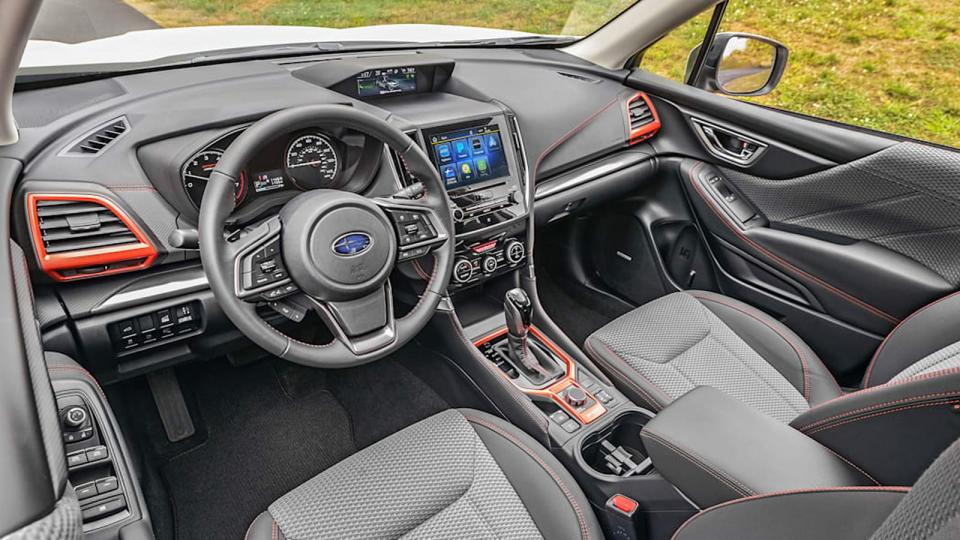
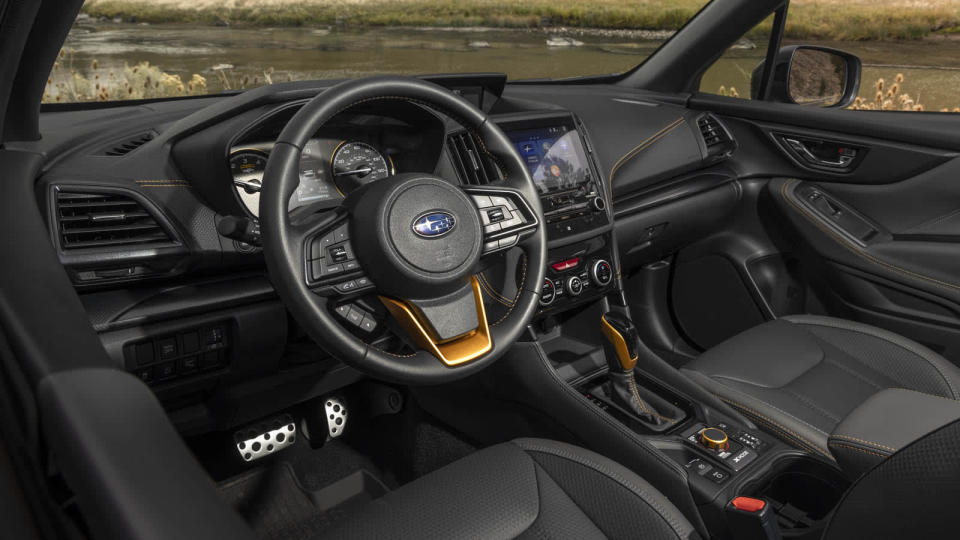
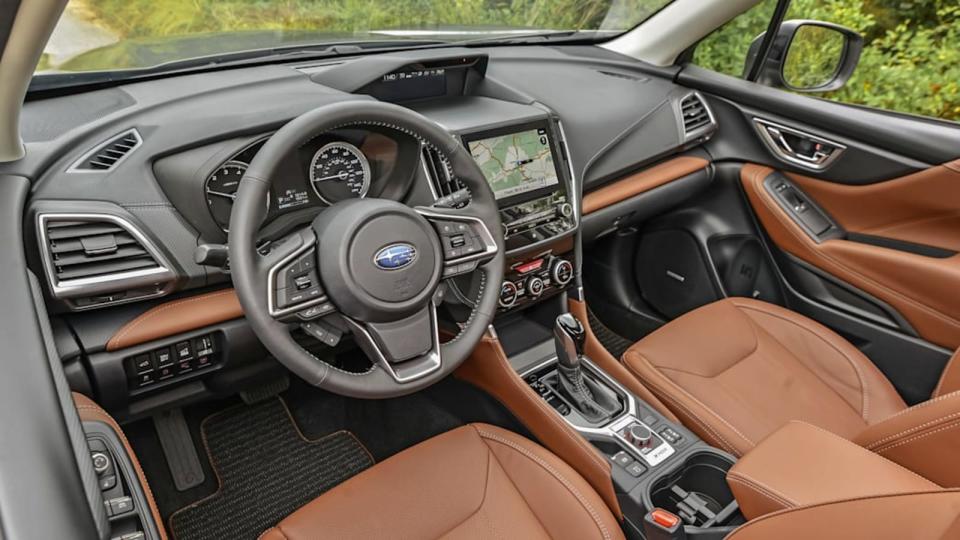
What are the Forester interior and in-car technology like?
The Forester's interior design is function-first, with a sensible control layout and visibility that rivals the Popemobile. The materials are of an acceptable quality, and driving for hours on rutted dirt roads proves it's all put together well. But don’t expect fake wood trim or fake leather applied to the dash and doors – the Forester isn't trying to be something it isn't. Instead, color is used to spruce things up, with orange in the Sport (top), copper in the Wilderness (above left) and camel in the ritzier Touring (above right). For those whose wardrobe and gear could mostly be sourced from REI, a Forester should fit right in.
The in-car tech is similarly sensible and easy-to-use, although opting for the 8-inch touchscreen upgrade over the standard 6.5-inch unit is certainly helpful. The big icons are easily read and pressed, which is good when you're on a bumpy dirt road (or just on terrible pavement). We also appreciate that Subaru has maintained physical buttons and knobs for menu selection and controls that aren't well-suited to touchscreens. On the other hand, the combination of touchscreen, instrument panel display and the unique dash-top display can make it difficult to know where to see or control certain vehicle functions. Buttons on the steering wheel are also tasked with operating both the IP and dash-top display, which presents a steep learning curve for new buyers. Subaru has cleaned this all up in the Outback by dropping the dash-top screen in favor of a much larger main screen, but that sadly hasn't made its way into the Forester yet. On the upside, the dash-top display is the perfect spot to show the forward camera feed in the Wilderness, which is a big help when negotiating tough terrain.
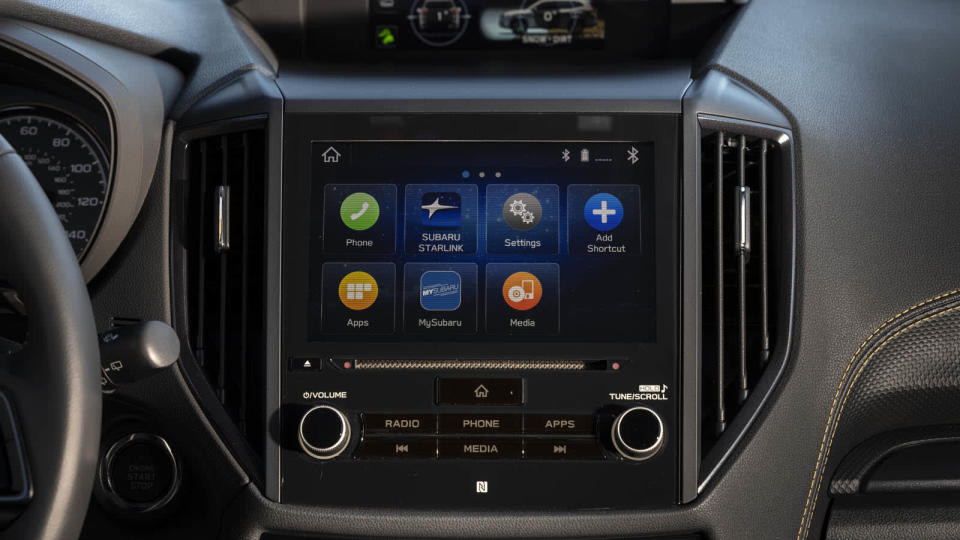
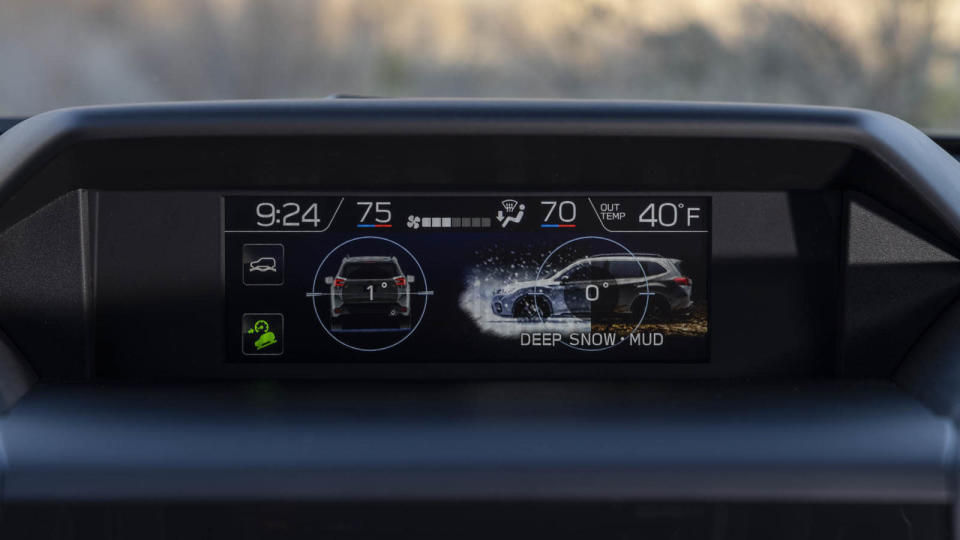
How big is the Forester?
The Forester has basically the same exterior dimensions as its main rivals, the Honda CR-V, Toyota RAV4, Hyundai Tucson and, to a lesser extent, Jeep Cherokee. Backseat space differs more between them, but they're all generously spacious and well within the realm of "family friendly." In fact, these are the most spacious compact SUVs. Still, the Forester stands out with its boxy side windows (visibility is exceptional even for back-seat occupants) and the ample recline of its seat back.
In terms of cargo space, the Forester's 28.9 cubic feet (or 26.9 with its jumbo sunroof) seemingly falls nearly 10 cubic feet short of the CR-V, RAV4 and Hyundai Tucson. This is curious, however. Subaru originally published cargo capacity numbers of 35.4 cu. ft. and 33.0 cu. ft. (no sunroof) for this Forester generation. Those would be far more in keeping with what we saw when actually loading it up with luggage. Although still a bit short of the segment's big boys, it's actually closer to them than its current cargo capacity figures would indicate on paper.
It's also worth noting the Forester's class-leading ground clearance. At 8.7 inches, only the Jeep Cherokee Trailhawk, specifically, can match it, with the Toyota RAV4 TRD Off-Road and Adventure falling just a bit short at 8.6. Remember, this is the base Forester, not a special off-roading trim level like those of its rivals. The Forester's own special off-roading trim, the Wilderness, cranks things up to 9.2 inches and shaves off some bumper to further improve its approach angle. Though it still can't match the Trailhawk's approach and departure angles, it's better than everything else, including other Cherokees. The same can be said for the Forester's roof rails, which are capable of supporting more weight than everything in the segment – with the Wilderness again upping the ante even further.
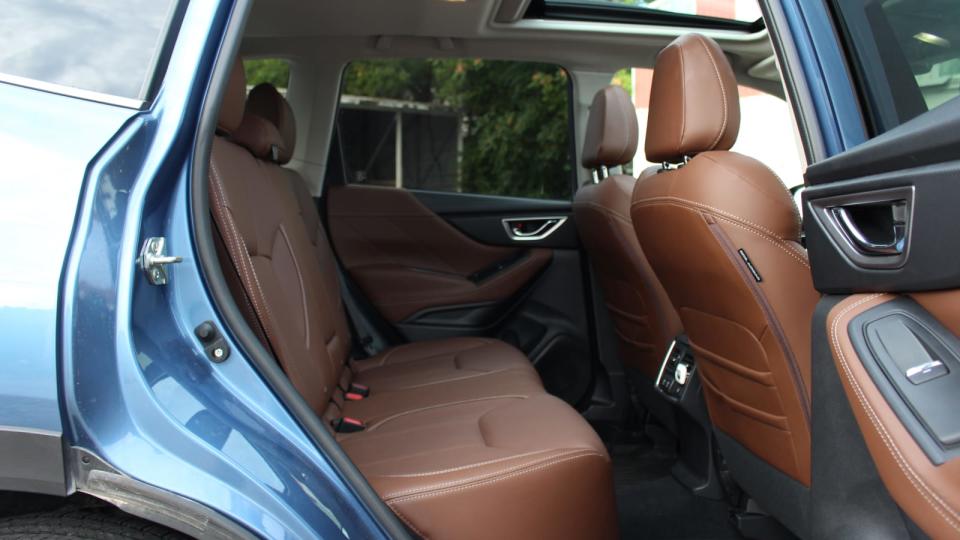
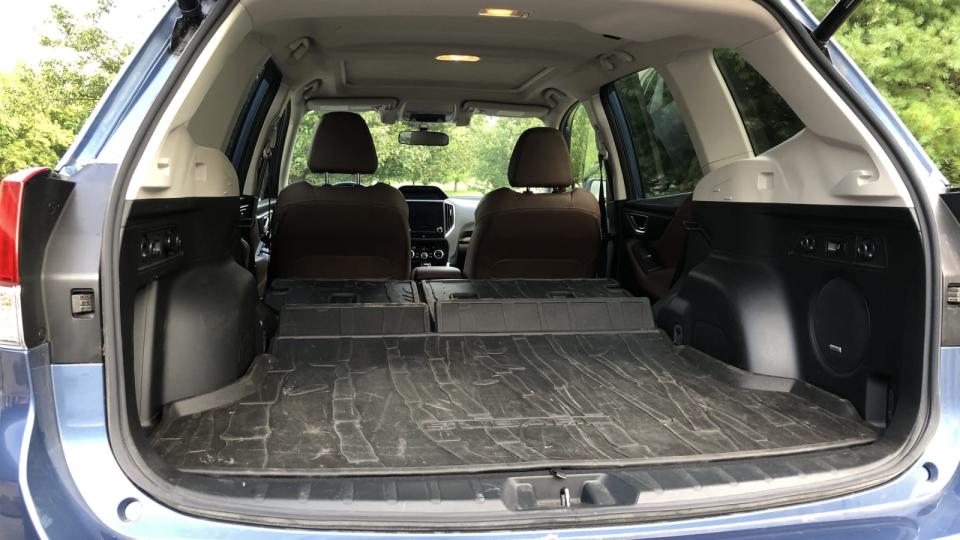
What are the Forester fuel economy and performance specs?
The Forester can only be had with a 2.5-liter boxer four-cylinder engine good for 182 horsepower and 176 pound-feet of torque, which is low for the segment. It is exclusively paired to all-wheel drive and a continuously variable transmission (CVT), which tries to simulate the gear shifts of a normal automatic. Its set ratios are altered in the Wilderness for sharper response and performance better suited to driving off-road.
Fuel economy is 26 miles per gallon city, 33 mpg highway and 29 mpg combined in all Foresters but the Wilderness. Its different transmission ratios, all-terrain tires and altered aerodynamics result in lower figures of 25 mpg city, 28 mpg highway and 26 mpg combined.
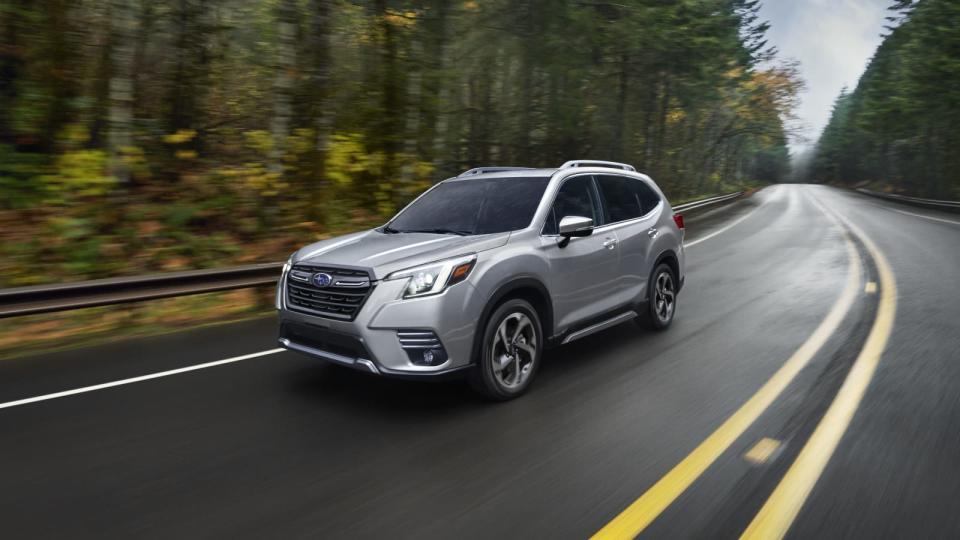
What's the Forester like to drive?
When on road, the Forester is fairly dull. The steering is numb and its turn-in off center is anything but crisp. The handling? Capable and stable, but if you're looking for responsive and engaging, look elsewhere. Acceleration is merely sufficient, and while enhanced by the boxer-four's characterful growl, it's still unpleasant when the CVT pins revs up high at full throttle. The standard CVT does slur together its "gear" ratios in a way that's less intrusive than the moo-like droning of older CVTs, but hardly what anyone would deem normal for an automatic.

 Yahoo Autos
Yahoo Autos 
